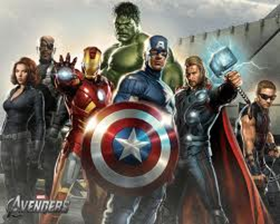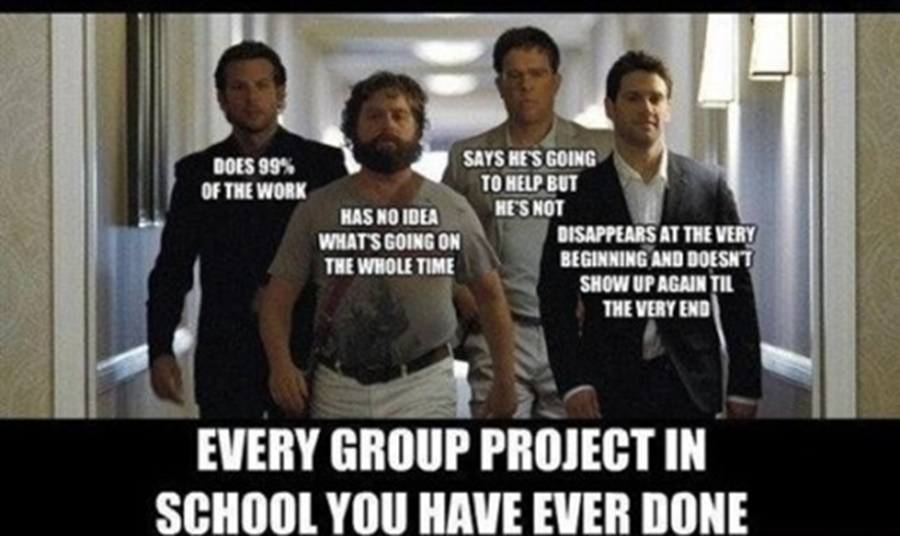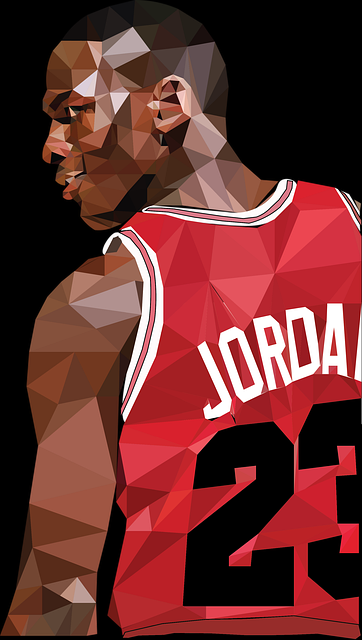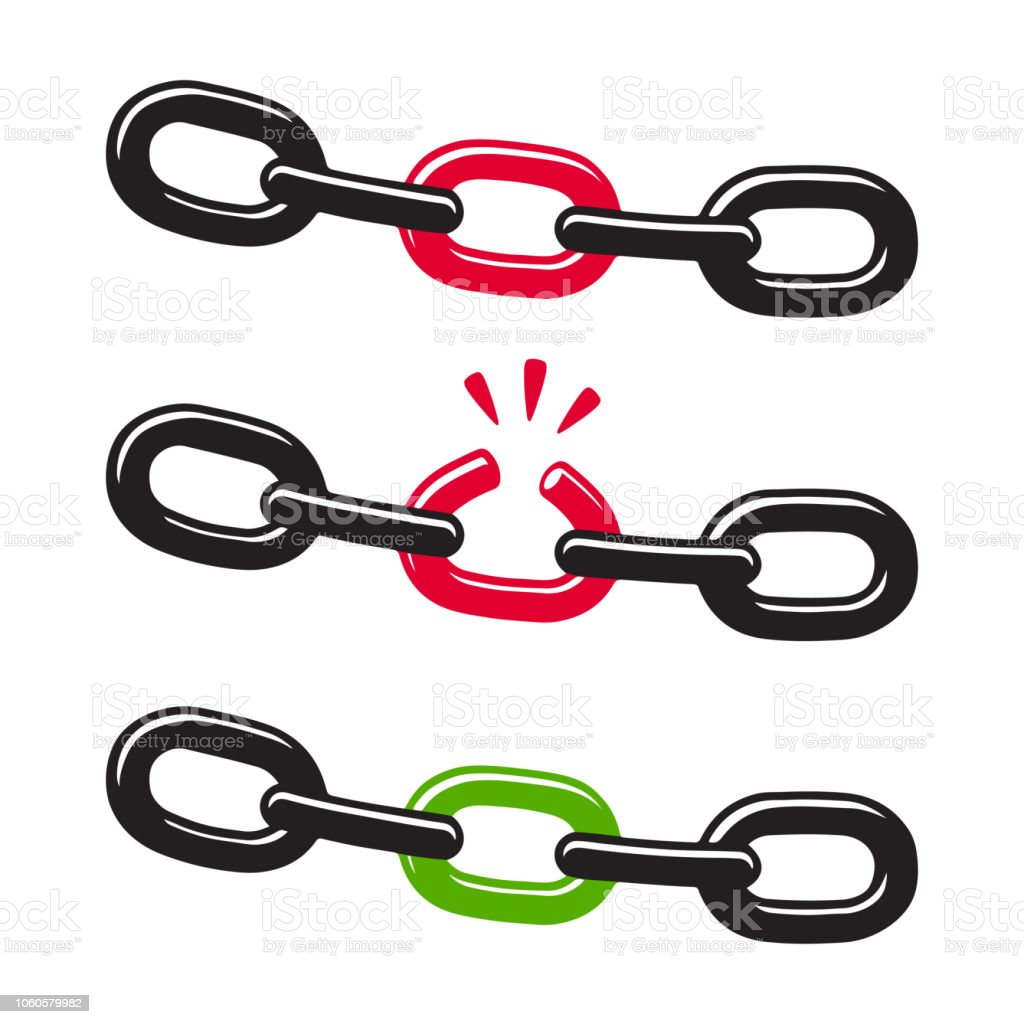Group Work
Why Should I Care?
Some students love working in groups, and others hate it. Some professors love assigning group work, and others loathe it. Nonetheless, the college experience cannot be complete without a group work activity. Here is some insight into how to succeed in group work, without letting everyone else do all the work.
This lesson has 3 parts
- Group Dynamics
- Roles
- Leadership and Personality
What is Group Work?
Group work refers to learning experiences in which students work together on the same task, according to the State University of New York at Buffalo (SUNY). Group work enables peer learning. If students interact with each other, they might have a positive learning experience. Group work is also associated to the kind of environments students will encouter outside the classroom in the workplace.
By definition, a small group is defined by five characteristics (Devito, 2020):
(1) a collection of individuals who
(2) are connected to one another by some common purpose,
(3) are interdependent,
(4) have some degree of organization among them, and
(5) see themselves as a group.
There are pitfalls to group work, such as poor collaboration, and lack of coherence of the final product. It is important to clarify the roles of each member, and to deal with leadership styles and personalities. The first thing to remember is that group work is about collaboration, so be sure to have an open mind about what the other members of the group will propose.
York University Group Work Tutorial
-
Group Dynamics
Groups will behave according to the people who make them up, and the parameters set to guide them. This is an important topic of study for many social scientists, but especially for psychologists, who focus on the personal interactions between members. This is called group dynamics. In psychological terms, not all groups are the same. You might have a group of friends, be part of a particular Facebook group, and your family is certainly a group. Sociologists are also known for thinking in terms of groups, usually larger groups. In sociological terms, you can be part of large groups such as a cultural group, a linguistic group, or a religious group.
The Avengers are a Group, or a Team?
When it comes to school work, the appropriate term would be a team, which is a subset of small groups, with higher levels of commitment, clearly defined roles, and where work is put in to produce content.
When you hear group work, you might think of 'collaboration' and sharing ideas. This is very true. Many students associate group work to sitting around a large table with 2-5 colleagues and talking about the project. This might be useful in the early stages, but group work doesn't mean you have to do all the work in the same room at the same time.
However, collaboration does not necessarily mean that everyone has their hands on the product at all times. Most times collaboration means that the work is passed along a production line, whether that's a newspaper, a car plant, or a school. Think of teachers, they collaborate with each other, but you rarely see them in groups. Same with sports teams: players need to play their position, and don't always need to communicate directly.
Often, tasks might be best done alone.
Advantages of Teamwork
Most of the work we do is done in teams, in some way, shape or form. Think of any organization, institution, or corporation. Even your family. These are all forms of teams. The main benefits are division of labour, efficient production, and sharing of knowledge. Teamwork is quite beneficial when the group is made of diverse people, in age, culture, gender, skills, competencies, and lived experience. Especially when you have healthy communication between team members, and a sense of cohesion.
Disadvantages of Teamwork
Groups can take up more time to do the work. Meetings can be long or difficult to schedule. Group dynamics tend to favour a consensus view, which may be refractory to disagreements. Cohesion may be difficult. Members need to trust each other, and respect each other's competencies.
Hierarchy Matters
In most organizations, teams are part of a complex hierarchy, where some people hold more responsibility, and are responsible for their team's work and production. This accountability comes with increasing levels of power, as one is promoted along the hierarchy.
Hierarchical leader
This type of leader holds power to decide because of their position in the organization's hierarchy. The leader may allow for opinions to be voiced, and may listen to advice from the team members. However the leader holds more responsibility and has the last word. The leader is also accountable for their team's work, and may be reprimanded if this is judged unsatisfactory.
-
Tasks and Roles
Teams work best when tasks and roles are clearly defined. This should be established early in the process.
A task is a piece of work to be done or undertaken. They should be assessed for difficulty and the time needed to complete them. For example, writing the introduction to a paper is a task.
A role is a function assumed by a person in a particular situation. Roles should be determined early in the group work process. For example, a writer is a role.
To avoid conflict, groups should agree on a few rules before they start work.
- Who will evaluate each other's work?
- Are the roles strictly delineated, or can there be overlap?
- If there is disagreement, how do we decide?
- authoritarian rule
- consensus
- vote
- discuss with the professor
Group Work Worst Nightmare
Scenario
The assignment is to produce a 6 page research report on the History of Hockey in Asia, using at least six high quality sources. Groups are made of three persons at random.
The group meets and decides to list the tasks and define the roles. They split the work. The time needed for some tasks is difficult to estimate. They agree on deadlines for each task. They agree on their roles.
Tasks
- Find 12-18 sources on Asian hockey history
- Quick Read
- Research Draft
- Select 4-8 sources that are high quality
- Proposal
- Annotated Bibliography
- Detailed Plan
- Write the paper
- Introduction
- Section on Canadian hockey history
- Section on Asian hockey history
- Conclusion
- Bibliography
- Format the paper and reference list APA style
- Proofread the paper
- Print and/or Submit
Roles
Researcher:
to find sources, read them, and write short summaries of their content. Produce annotated bibliography.
Writer:
to write the introduction, body paragraphs, and conclusion. Integrate sources to one paper.
Editor:
to revise the paper, edit language, grammar, syntax, and formatting. Double-check citations, APA style and references.
-
Leadership and Personality
When you work in a team, you win or lose, as a team. This is not the space for individuality, at least not to the expense of the team. To ensure that the members of the team work well TOGETHER, there often needs to be strong leadership.
There is no letter 'I', in the word TEAM.
This is especially true in team sports.
That Time Jordan Rained Buckets on the Celtics, and Still Lost
Remember the game when Michael Jordan scored 63 points against the Boston Celtics? It was on April 20, 1986. Larry Bird, a veteran superstar with the Celtics, was more than impressed by the Chicago Bulls' extraordinary rookie. Jordan showed off, and impressed the crowd with his fancy footwork, tongue waging dunks, and signature fade-away jump shot.
But. The Celtics won that game 131-135. They played as a team, and continued in the playoffs.
They won the 1986 championship.
Individual performance may not be sufficient to win in group endeavours.
Michael Jordan's problem was not that he was being selfish. That night, he knew that he couldn't win against the Celtics. He wanted to showcase his talent, and allow his youthful energy to express itself. His coach's strategy was to 'Give the ball to Michael'. Notice that the Bulls never won championships this way. The next year, Jordan set out, with the leadership of the Bulls, to improve the team.
Jordan no longer played point guard, he deferred to the shooting guard position. They hired a new coach, Phil Jackson, and added players like Scottie Pippen, Horace Grant, and later defensive genius Dennis Rodman. The Bulls won their six championships using their famous 'triangulation' plays, which meant that Jordan would often be the third or fourth player to touch the ball. One last point, Jordan focussed more than ever on his defensive play, totalling 2,514 steals over his career, earning him the fourth rank in NBA history in this regard (ESPN, 2023). This is not a usual feat for a natural scorer.
Your team is only as strong as it's weakest link.
Teams are only as strong as their weakest member. A famous analogy is that of the chain. The chain is made of many links. It does not matter if most of the links are strong. The weakest link will break first, and then the chain is useless. Strong leaders keep this in mind.
What is leadership?
There might be as many definitions of leadership as there are leaders. For some people, leadership is the action of bringing people forward. For others, leadership is the ability to see what needs to be done, and getting it done, someway, somehow. CEOs and politicians are not the only leaders in society.
Formal definition of leadership:
Process of influencing the thoughts, feelings, and behaviours of group members and establishing the direction that others follow.
Leadership Skills
- Prepare members and start interaction
- Build group cohesiveness
- Maintain effective interaction
- Guide through the agreed-on agenda
- Ensure member satisfaction
- Empower group members
- Encourage ongoing evaluation and improvement
- Manage conflict
- Mentor
Types of leaders
Of course leadership also entails different styles, and methods, of getting people to produce, cooperate, and advance. Some leaders are using fear and authority. Others are using charisma and seduction. Still, others will use empowering techniques, and motivation. Keep in mind that a leader's power ultimately comes from their support base, which might be with team members, or with person's holding more authority and power.
Laissez-faire leader
This type of leader allows team members to act without strict over-sight, or what's called 'micro-management'. The team members are evaluated on results, rather than on the process.
Charismatic leader
This type of leader has the IT factor. A je ne sais quoi' to their personality. This is called charisma. They usually are brilliant speakers, and are able to seduce people into working for them. They usually are generous in their praise of good work, but can be devastating when they are dissatisfied.
Iron-fist-in-a-velvet-glove leader
This type of leader is very strong and firm. They don't back down and have incredible moral strength. This is the iron fist. However, they hide their iron fist in a soft, velvet glove. They have a soft touch and seem to be kind and understanding on the outside. The expression was coined by the French Emperor Napoleon Bonaparte.
Democratic leader
This type of leader will allow for group decision-making to be made democratically, either through consensus or majority vote. The leader's role is to represent the wishes of the group, not to command.
Support the introverts
The best teams will be able to benefit from the diverse set of skills of its members. As you know, some people will be comfortable interacting with others, and might even enjoy presenting in front of an audience. Psychologists will tend to call these people 'extroverts', a concept first coined by Carl Jung.
Take the quiz! Are you an intra or extra ?
https://ideas.ted.com/quiz-are-you-an-extrovert-introvert-or-ambivert/
Inversely, some people are more comfortable with quieter settings and don't necessarily have much fun with oral presentations and loud group settings. These are the 'introverts'. According to Simon Sinek, management consultant, being an introvert does not mean you can't be a great leader, or even a great public speaker.
Simon Sinek on Introverts
Susan Cain on the Power of Introverts
According to best-selling author Susan Cain, having introverts in your team has many benefits. In the following TED talk, Cain discusses her personal experience as an introvert in the world of law, and media.
References and Further Reading
Beyerlein, M. M. (Editor) (2013). Work Teams: Past, Present and Future. Springer Netherlands.
Devito, J. A. (2020). Essentials of Human Communication. Ch.9 Small Group communication, Pearson Education.
ESPN. (2023). NBA History - Steals Leaders. ESPN Internet Ventures. http://www.espn.com/nba/history/leaders/_/stat/steals
Jackson, N. (2008). Iron fists and velvet gloves: What's the best way to be the boss? The Independent. https://www.independent.co.uk/student/postgraduate/mbas-guide/iron-fists-and-velvet-gloves-what-s-the-best-way-to-be-the-boss-770775.html
Lipton, L. & Wellman, B. M. (2010) Groups at Work: Strategies and Structures for Professional Learning. MiraVia LLC.
SUNY-Buffalo. (2023). Group Work. State University of New York at Buffalo. https://www.buffalo.edu/catt/develop/teach/group-work.html




